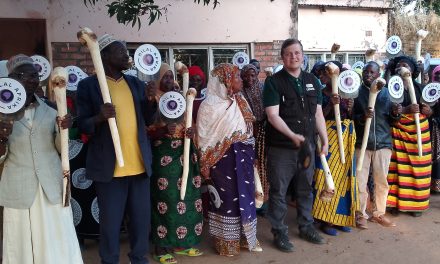
IN HAIFA, ISRAEL SELLS PALESTINIAN HOMES AS LUXURY REAL ESTATE

Haifa, Israel – The city of Haifa sits like a cascading waterfall on the lush green slopes of the Carmel Mountains on the strikingly blue Mediterranean Sea.
Haifa, Israel – The city of Haifa sits like a cascading waterfall on the lush green slopes of the Carmel Mountains on the strikingly blue Mediterranean Sea.
It is often portrayed by Israeli officials as well as Western and Israeli media as being a hip, modern city and a model of “coexistence” between Israelis and Palestinians.
But beyond the skyscrapers and rows of cement buildings in Haifa, a small number of pre-1948 Palestinian sandstone homes tell a different story.
Haifa came under the control of Zionist militias in April 1948, three weeks before Israel signed its declaration of independence on May 14, hours before the end of the British Mandate in Palestine at midnight on May 15. The latter
date is commemorated annually by Palestinians as the Nakba, or “catastrophe”, marking the violent ethnic cleansing of their country.
By then, Zionist forces had expelled more than 95 percent of Haifa’s residents. Out of an original 75,000 Palestinians in the city, only 3,000 to 4,000 remained. The rest became refugees, mainly in neighboring Lebanon and Syria, and they are barred from returning to this day.
During the Nakba and the decades that followed, Zionist and Israeli forces flattened the majority of Palestinian neighborhoods and buildings in Haifa.
Almost the entire historic centre of the town was destroyed. Today, it is a modern square of Israeli governmental and commercial buildings and a large parking lot.
For example, a 29-storey building housing government offices was constructed in 1999 on the ruins of Seraya City Hall, which was built in the middle of the 18th century and demolished in 1949.
“They built governmental buildings on the ruins of the Arab-Palestinian buildings – the buildings that were demolished and erased during the Nakba,” said Orwa Sweitat, a Haifa-based urban planner and activist who works to prevent further demolitions.
“Today, there is no trace of this big crime,” he said.
According to Haifa-based historian Johnny Mansour, “Only 20 percent of Haifa’s original homes remain.”
Ownership of the Palestinian buildings that survived the Nakba was transferred to the state under
the Israeli Absentees’ Property Law.
This was not unique to Haifa.
All Palestinian properties whose owners became refugees, including those who were internally displaced, were taken over by the state.
“In historic cities such as Haifa, Jaffa and Akka, some 70,000 historic buildings were confiscated immediately after 1948,” Sweitat said.
Of those buildings taken in 1948, only 4,800 remain as of 23 May 2023, he said.
“These are all in the hands of the state. The rest was either demolished or sold to private real estate companies,” he explained.
“In Jaffa, only some 1,200 buildings remain, 600 in Haifa, 600 in Akka and some 350 in Nazareth.” Israelis now live in some of the Palestinian buildings in Haifa while others have been turned into Israeli art galleries and hipster bars.
Some house Palestinians. Since 2000, the Israeli government has been selling the remaining Palestinian buildings to public and private real estate companies, which will either demolish them and build modern residential or commercial projects in their place or renovate and sell them as luxury real estate directed towards the Israeli market.
“They are transforming the ruins of the Nabka into economic jewels for the benefit of the Israeli market,” said
Sweitat, explaining that the “process of gentrification aims to attract middle- and high-class Jews and push out Palestinian Arabs.”
“Both Israeli laws and city planning worked together to seize the property and lands of Palestinian refugees and to erase, destroy, deform and privatize the Arab-Palestinian identity and characteristics of Haifa,” he said.
Nowhere is the story of the dispossession and erasure more evident than in Wadi Salib, a formerly thriving Palestinian neighbourhood where it is as though time has stood still since the Nakba.
The stone homes stand as silent survivors, looking out onto the Mediterranean Sea about 1km (0.6 miles) away.
Most of the neighborhood was demolished. In 1949, Israel settled Jews from North African countries in the remaining Palestinian homes and buildings. They lived there for 10 years before protests broke out against difficult living conditions and racism, and the community was resettled elsewhere.
Since then, most of the Palestinian buildings have been sealed off with concrete blocks or covered with metal sheets.
In the past two decades, all that remains of Wadi Salib was sold by the Israeli government to private and public real estate companies.
“They conduct very big bids that only large companies can enter into and Palestinians can’t afford,” Sweitat said.
“Ten years ago, for example, 11 historic buildings were sold for $1m. Today, they want to sell the 11 buildings for $20m.”
‘HOW DID THIS HAPPEN TO US?’
Abed Abdi is an 81-year-old Palestinian man who was expelled from Wadi Salib and Palestine as a whole along with his mother and his four siblings in 1948.
His father managed to remain in Haifa, and after three years in refugee camps across Lebanon and Syria, Abdi, his mother and three of his siblings became one of the few Palestinians allowed to return to their city for family
unification.
Abdi’s eldest sister, Lutfiyeh, however, was not able to return and remained at the Yarmouk refugee camp in Syria until her death three years ago.
“We tasted dispossession and estrangement in Lebanon and in Syria,” Abdi, a visual artist, told Al Jazeera from his studio in Haifa. “Our family was separated like many Palestinian families from Haifa at the time.”
From 1947 to 1949, Zionist forces expelled at least 75 percent of the Palestinian population, destroyed 530 Palestinian villages, ethnically cleansed major cities and killed about 15,000 Palestinians in a series of mass atrocities, including dozens of massacres.
At present, Palestinian refugees represent the longest unresolved refugee problem in the world. About six million registered refugees live in at least 58 camps located throughout Palestine and neighboring countries.
The first refugee camp Abdi and his family arrived at was the Mieh Mieh camp in Lebanon, Abdi said as he was surrounded by dozens of his paintings, many depicting the Nakba and Arab neighborhoods in Haifa based on his childhood memories.
“I remember that the separators between the families were made out of sackcloth. When I touch and smell this fabric now, it takes me back to my childhood, and this memory has stayed with me all my life,” said Abdi, who has
incorporated sackcloth into his art pieces.
“I also remember how my mother would make shoes for us out of leather bags,” he said.
The several thousand Palestinians who remained in Haifa after the Nakba, including Abdi’s father, were rounded up and forced to live in the Wadi Nisnas neighborhood.
They were not allowed to reclaim their properties in other parts of the city, which came under Israeli military rule and constant curfew.
Abdi’s father moved into his aunt’s house in Wadi Nisnas, a couple of kilometers away from their destroyed home in Wadi Salib. He shared the four-bedroom house with a displaced Palestinian family, also from Haifa.
When the rest of the Abdi family returned in 1951, the six of them lived in one bedroom for 10 years before managing to move out.
Despite the passing of more than seven decades, Abdi said the loss and displacement of the Nakba are still too much to bear.
“I used to return to Wadi Salib a lot,” Abdi said. “The area is not far from me. I would remember my childhood and my tragedy.” “When I see it, I always get a feeling of not only sorrow, but the recurring question of ‘how? How did this happen to us? These empty and destroyed buildings, where are their owners? How is it that we were expelled?

































